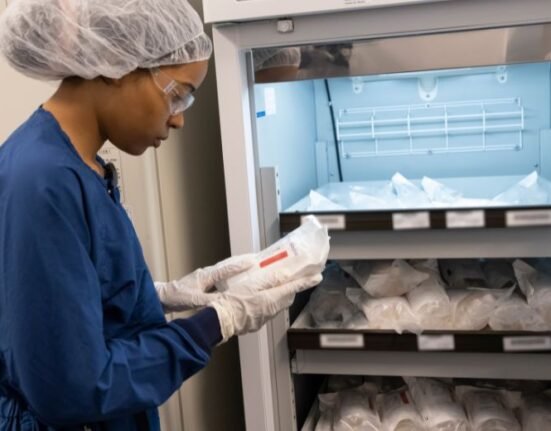HQ Team
September 18, 2024: Surgery-free cataracts may be possible in the future after researchers at the National Institutes of Health discovered a protein that can reverse and manage the clouding of the eye’s lens or lead to the development of a drug.
The protein, RNF114, reverses cataracts that occur as people age. The disease is also a common cause of loss of vision, according to a statement from the institute.
Sometimes children are born with the condition, or a cataract may develop following an eye injury, or as a result of inflammation or other diseases, such as glaucoma and diabetes, according to the WHO.
It is responsible for over 51% of blindness in the Eastern Mediterranean Region. Although cataracts can be easily surgically operated, in many countries access to eye care is limited. There is no known prevention for the cataract. Reduction of cigarette smoking and ultraviolet light exposure may delay the development of cataracts.
‘Lack of access’
“Scientists have long searched for an alternative to cataract surgery, which is effective, but not without risk,” said Xingchao Shentu, MD, a cataract surgeon and the co-lead investigator from Zhejiang University, China.
“Lack of access to cataract surgery is a barrier to care in some parts of the world, causing untreated cataracts to be a leading cause of blindness worldwide,” he said.
The discovery was part of ongoing research at NIH’s National Eye Institute involving a mammalian hibernator — the 13-lined ground squirrel.
In ground squirrels the light-sensitive photoreceptor cells in the retina are mostly cones, which makes the ground squirrel helpful for studying cone-related properties, such as colour vision.
Additionally, the squirrel’s ability to withstand months of cold and metabolic stress during hibernation makes it a model for vision scientists to study a range of eye diseases.
Researchers at the NIH’s National Eye Institute learned that during hibernation, the ground squirrel’s lenses became cloudy at around 4 degrees Celsius but quickly turned transparent after rewarming.
Response to cold stress
By comparison, non-hibernators (rats in this study) developed cataracts at low temperatures, but they did not resolve with rewarming.
When exposed to low temperatures cataract formation in hibernating animals is likely a cellular response to cold stress and is one of many changes their bodies undergo as their tissues adapt to freezing temperatures and metabolic stress.
Humans do not develop cataracts when exposed to low temperatures, the researchers said.
“Understanding the molecular drivers of this reversible cataract phenomenon might point us in a direction toward a potential treatment strategy,” said the study’s co-lead investigator, Wei Li, PhD, senior investigator in the NEI Retinal Neurophysiology Section.
The job of the lens is to focus light onto the retina at the back of the eye. As we age, cataracts form when proteins in the lens start misfolding and forming clusters that block, scatter and distort light as it passes through the lens.
Protein homeostasis
Ageing can disrupt protein homeostasis—a process that maintains the balance of newly made proteins and the turnover of old proteins.
To explore the ground squirrel’s reversible cataracts at the molecular level, the team developed a lab-based, lens-in-a-dish model using stem cells engineered from ground squirrel cells at a lab.
The researchers zeroed in on a part of an extensive network that maintains protein homeostasis in part by breaking down old proteins, known as the ubiquitin-proteasome system.
The RNF114 protein was significantly elevated during rewarming in the ground squirrel, compared with the non-hibernating rat. RNF114 had previously been shown to help identify old proteins and facilitate their degradation.
To look further at RNF114’s effect, they again used a non-hibernator (rat) cataract model by incubating its lenses at 4 degrees Celsius. Normally, such cataracts would not resolve with rewarming. However, when the lenses were pretreated with RNF114, there was a rapid clearing of the cataract upon rewarming.
Neurodegenerative diseases
The findings are “proof-of-principle” that it is possible to induce cataract clearance in animals. In future studies, the process will need to be fine-tuned so scientists can stimulate specific protein degradation to see how to precisely regulate protein stability and turnover.
This mechanism is also an important factor in many neurodegenerative diseases, the researchers said.
The study was published in the Journal of Clinical Investigation.









1 Comment